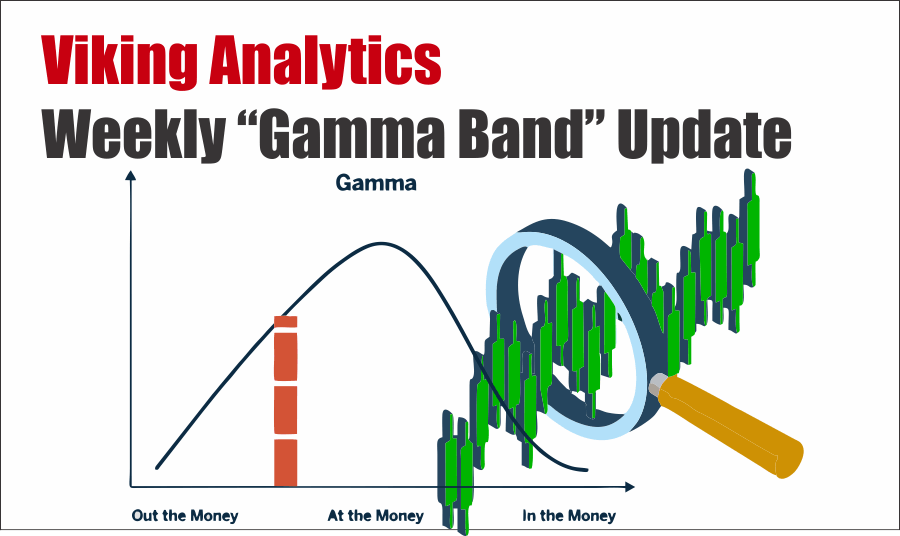We share the Weekly Gamma Bands Update by Viking Analytics. The report uses options gamma to help you better manage risk and your equity allocations.
Gamma Band Update
The S&P 500 (SPX) had a strong rally last Thursday and Friday to close the week above our calculated gamma flip level. The gamma band model began the week with a 100% allocation to SPX. The gamma flip level can be viewed as having served as resistance; once it was broken, the market moved meaningfully higher,.
The Gamma Band model[1] is a simplified trend following model that is designed to show the effectiveness of tracking various “gamma” levels. This can be viewed conceptually as a risk management tool. When the daily price closes below Gamma Flip level (currently near 4,415), the model will reduce exposure to avoid price volatility and sell-off risk. If the market closes below what we call the “lower gamma level” (currently near 4,290), the model will reduce the SPX allocation to zero.
The main premise of this model is to maintain high allocations to stocks when risk and corresponding volatility are expected to be low. For investors who have been conditioned to “buy low and sell high,” it is counter-intuitive to increase allocations when the market rises, but this approach has shown to increase risk-adjusted returns in the back-test.
The Gamma Band model is one of several indicators that we publish daily in our SPX Report (click here for a sample report).
With stocks climbing to historically high valuations, risk management tools have become more important than ever to manage the next big drawdown. We incorporate many options-based signals into our daily stock market algorithms. Please visit our website to learn more about our trading and investing tools.
The Gamma Flip – Background
Many market analysts have noted that daily volatility in the S&P 500 will change when the value of the SPX moves from one gamma regime to another. Some analysts call this level the “gamma flip.” The scatterplot below shows how price volatility (on the y-axis) is increasingly lower as the value of SPX rises higher above the Gamma Neutral level (on the right side of the chart). When the value of the S&P closes lower than Gamma Neutral (to the left of the chart), volatility increases.
Gamma Band Model – Background
The purpose of the Gamma Band model is to show how tail risk can be reduced by following a few simple rules. The daily Gamma Band model has improved risk-adjusted returns by over 60% since 2007. The graph below demonstrates how this approach can limit drawdowns while maintaining good returns. A quick video introduction of the Gamma Band model can be seen by following this link.
Disclaimer
This is for informational purposes only and is not trading advice. The information contained in this article is subject to our full disclaimer on our website.
[1] The Gamma Band model in our SPX Market Report adjusts position size DAILY based upon the daily closing levels of SPX value and calculated Gamma Neutral. The Weekly Gamma Band model is shown for illustrative purposes only.
Authors
Erik Lytikainen, the founder of Viking Analytics, has over twenty-five years of experience as a financial analyst, entrepreneur, business developer, and commodity trader. Erik holds an MBA from the University of Maryland and a BS in Mechanical Engineering from Virginia Tech.
Rob McBride has 15+ years of experience in the systematic investment space and is a former Managing Director at a multi-billion dollar hedge fund. He has deep experience with market data, software and model building in financial markets. Rob has a M.S. in Computer Science from the South Dakota School of Mines and Technology.





